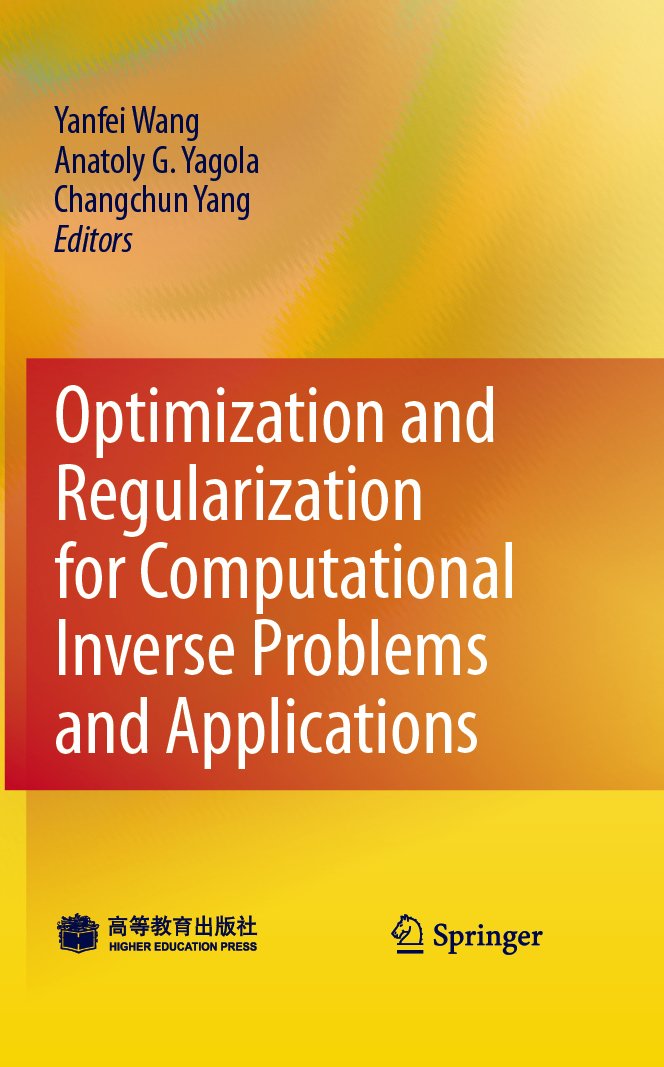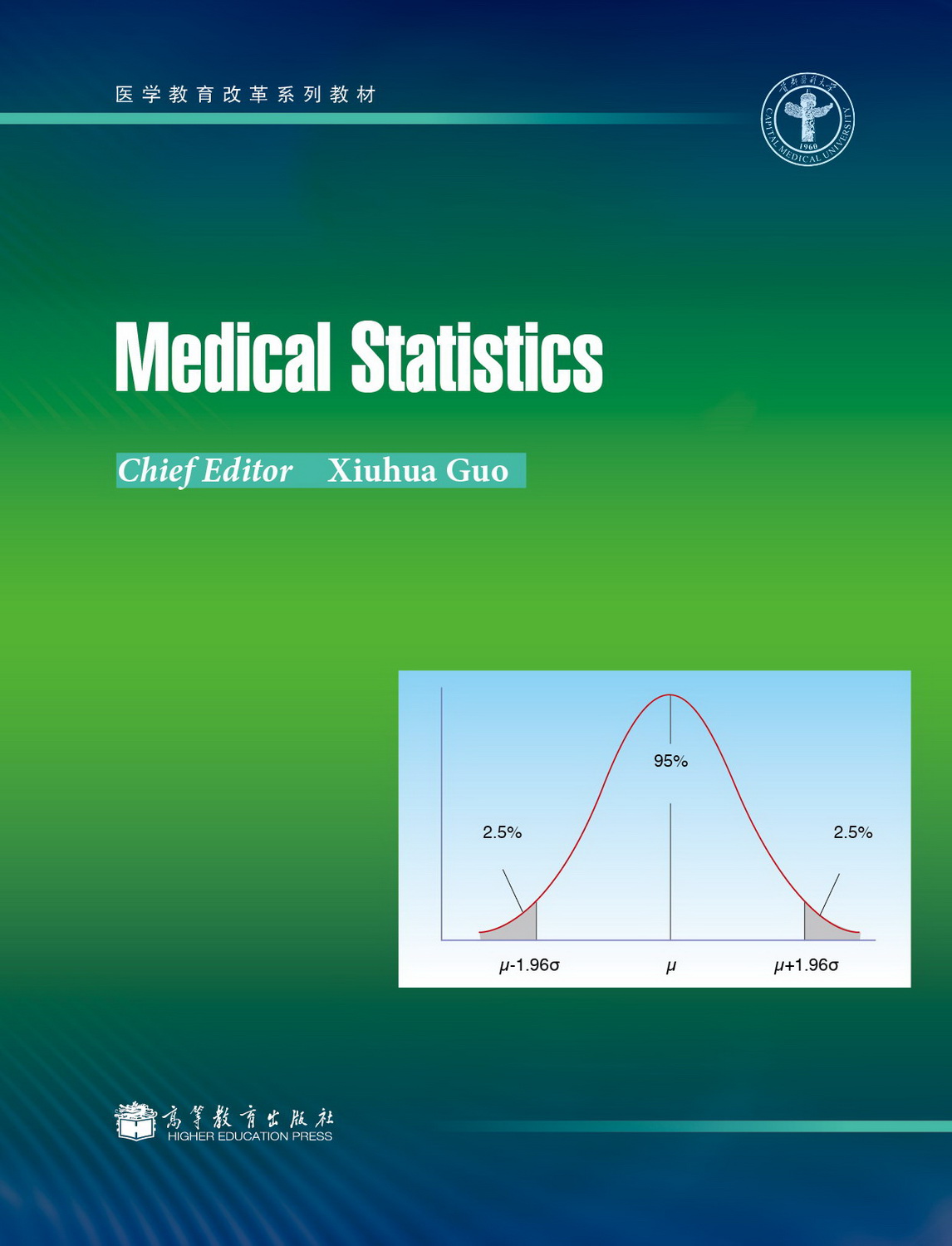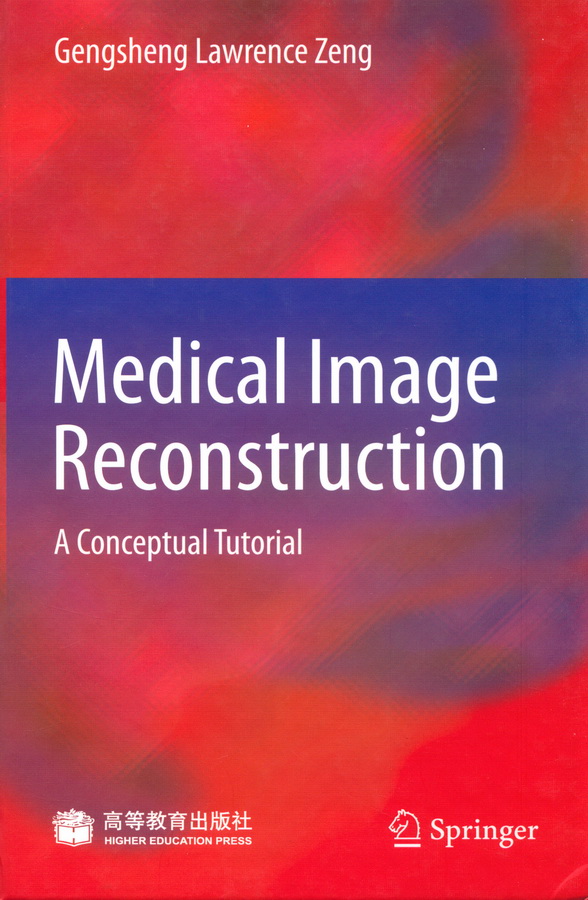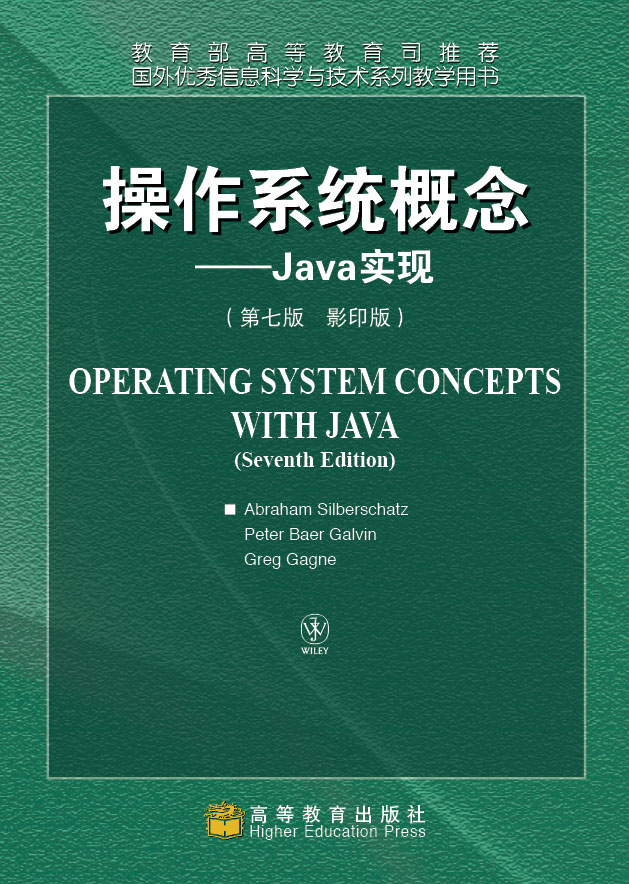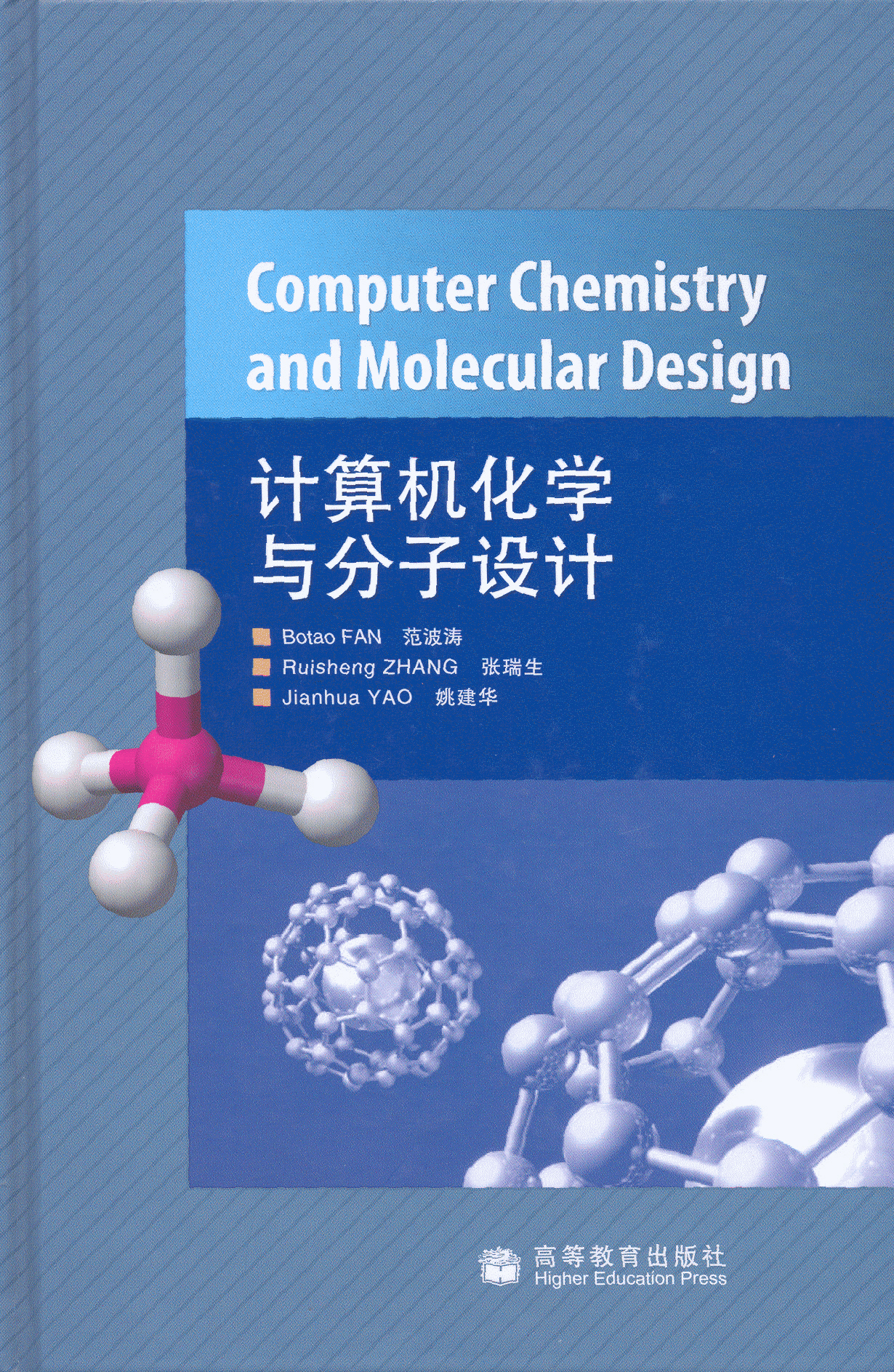计算反演问题中的优化与正则化方法及其应用
作者: 王彦飞 Anatoly G. Yagola 杨长春
出版时间:2010-06-08
出版社:高等教育出版社
- 高等教育出版社
- 9787040285154
- 1
- 253778
- 精装
- 16开
- 2010-06-08
- 620
- 350
Optimization and Regularization for Computational Inverse Problems and Applications focuses on advances in inversion theory and recent developments with practical applications, particularly emphasizing the combination of optimization and regularization for solving inverse problems. This book covers both the methods, including standard regularization theory, Fejer processes for linear and nonlinear problems, the balancing principle, extrapolated regularization, nonstandard regularization, nonlinear gradient method, the nonmonotone gradient method, subspace method and Lie group method; and the practical applications, such as the reconstruction problem for inverse scattering, molecular spectra data processing, quantitative remote sensing inversion, seismic inversion using the Lie group method, and the gravitational lensing problem.
Scientists, researchers and engineers, as well as graduate students engaged in applied mathematics, engineering, geophysics, medical science, image processing, remote sensing and atmospheric science will benefit from this book.
Front Matter
Part I Introduction
1 Inverse Problems, Optimization and Regularization: A Multi-Disciplinary Subject
Yanfei Wang and Changchun Yang
1.1 Introduction
1.2 Examples about mathematical inverse problems
1.3 Examples in applied science and engineering
1.4 Basic theory
1.5 Scienti_c computing
1.6 Conclusion
References
Part II Regularization Theory and Recent Developments
2 Ill-Posed Problems and Methods for Their Numerical Solution
Anatoly G. Yagola
2.1 Well-posed and ill-posed problems
2.2 De_nition of the regularizing algorithm
2.3 Ill-posed problems on compact sets
2.4 Ill-posed problems with sourcewise represented solutions
2.5 Variational approach for constructing regularizing algorithms
2.6 Nonlinear ill-posed problems
2.7 Iterative and other methods
References
3 Inverse Problems with A Priori Information
Vladimir V. Vasin
3.1 Introduction
3.2 Formulation of the problem with a priori information
3.3 The main classes of mappings of the Fej_er type and their properties
3.4 Convergence theorems of the method of successive approximations for the pseudo-contractive operators
3.5 Examples of operators of the Fej_er type
3.6 Fej_er processes for nonlinear equations
3.7 Applied problems with a priori information and methods forsolution
3.7.1 Atomic structure characterization
3.7.2 Radiolocation of the ionosphere
3.7.3 Image reconstruction
3.7.4 Thermal sounding of the atmosphere
3.7.5 Testing a wellbore/reservoir
3.8 Conclusions
References
4 Regularization of Naturally Linearized Parameter Identi_cation Problems and the Application of the Balancing Principle
Hui Cao and Sergei Pereverzyev
4.1 Introduction
4.2 Discretized Tikhonov regularization and estimation of accuracy
4.2.1 Generalized source condition
4.2.2 Discretized Tikhonov regularization
4.2.3 Operator monotone index functions
4.2.4 Estimation of the accuracy
4.3 Parameter identi_cation in elliptic equation
4.3.1 Natural linearization
4.3.2 Data smoothing and noise level analysis
4.3.3 Estimation of the accuracy
4.3.4 Balancing principle
4.3.5 Numerical examples
4.4 Parameter identi_cation in parabolic equation
4.4.1 Natural linearization for recovering b(x) = a(u(T; x))
4.4.2 Regularized identi_cation of the di_usion coe_cient a(u)
4.4.3 Extended balancing principle
4.4.4 Numerical examples
References
5 Extrapolation Techniques of Tikhonov Regularization
Tingyan Xiao, Yuan Zhao and Guozhong Su
5.1 Introduction
5.2 Notations and preliminaries
5.3 Extrapolated regularization based on vector-valued function approximation
5.3.1 Extrapolated scheme based on Lagrange interpolation
5.3.2 Extrapolated scheme based on Hermitian interpolation
5.3.3 Extrapolation scheme based on rational interpolation
5.4 Extrapolated regularization based on improvement of regularizing quali_cation
5.5 The choice of parameters in the extrapolated regularizing approximation
5.6 Numerical experiments
5.7 Conclusion
References
6 Modi_ed Regularization Scheme with Application in Reconstructing Neumann-Dirichlet Mapping
Pingli Xie and Jin Cheng
6.1 Introduction
6.2 Regularization method
6.3 Computational aspect
6.4 Numerical simulation results for the modi_ed regularization
6.5 The Neumann-Dirichlet mapping for elliptic equation of second order
6.6 The numerical results of the Neumann-Dirichlet mapping
6.7 Conclusion
References
Part III Nonstandard Regularization and Advanced Optimization Theory and Methods
7 Gradient Methods for Large Scale Convex Quadratic Functions
Yaxiang Yuan
7.1 Introduction
7.2 A generalized convergence result
7.3 Short BB steps
7.4 Numerical results
7.5 Discussion and conclusion
References
8 Convergence Analysis of Nonlinear Conjugate Gradient Methods
Yuhong Dai
8.1 Introduction
8.2 Some preliminaries
8.3 A su_cient and necessary condition on _k
8.3.1 Proposition of the condition
8.3.2 Su_ciency of (8.3.5)
8.3.3 Necessity of (8.3.5)
8.4 Applications of the condition (8.3.5)
8.4.1 Property (#)
8.4.2 Applications to some known conjugate gradient methods
8.4.3 Application to a new conjugate gradient method
8.5 Discussion
References
9 Full Space and Subspace Methods for Large Scale Image Restoration
Yanfei Wang, Shiqian Ma and Qinghua Ma
9.1 Introduction
9.2 Image restoration without regularization
9.3 Image restoration with regularization
9.4 Optimization methods for solving the smoothing regularized functional
9.4.1 Minimization of the convex quadratic programming problem with projection
9.4.2 Limited memory BFGS method with projection
9.4.3 Subspace trust region methods
9.5 Matrix-Vector Multiplication (MVM)
9.5.1 MVM: FFT-based method
9.5.2 MVM with sparse matrix
9.6 Numerical experiments
9.7 Conclusions
References
Part IV Numerical Inversion in Geoscience and Quantitative Remote Sensing
10 Some Reconstruction Methods for Inverse Scattering Problems
Jijun Liu and Haibing Wang
10.1 Introduction
10.2 Iterative methods and decomposition methods
10.2.1 Iterative methods
10.2.2 Decomposition methods
10.2.3 Hybrid method
10.3 Singular source methods
10.3.1 Probe method
10.3.2 Singular sources method
10.3.3 Linear sampling method
10.3.4 Factorization method
10.3.5 Range test method
10.3.6 No response test method
10.4 Numerical schemes
References
11 Inverse Problems of Molecular Spectra Data Processing
Gulnara Kuramshina
11.1 Introduction
11.2 Inverse vibrational problem
11.3 The mathematical formulation of the inverse vibrational problem
11.4 Regularizing algorithms for solving the inverse vibrational problem
11.5 Model of scaled molecular force _eld
11.6 General inverse problem of structural chemistry
11.7 Intermolecular potential
11.8 Examples of calculations
11.8.1 Calculation of methane intermolecular potential
11.8.2 Prediction of vibrational spectrum of fullerene C240
References
12 Numerical Inversion Methods in Geoscience and Quantitative Remote Sensing
Yanfei Wang and Xiaowen Li
12.1 Introduction
12.2 Examples of quantitative remote sensing inverse problems: land surface parameter retrieval problem
12.3 Formulation of the forward and inverse problem
12.4 What causes ill-posedness
12.5 Tikhonov variational regularization
12.5.1 Choices of the scale operator D
12.5.2 Regularization parameter selection methods
12.6 Solution methods
12.6.1 Gradient-type methods
12.6.2 Newton-type methods
12.7 Numerical examples
12.8 Conclusions
References
13 Pseudo-Di_erential Operator and Inverse Scattering of Multidimensional Wave Equation
Hong Liu, Li He
13.1 Introduction
13.2 Notations of operators and symbols
13.3 Description in symbol domain
13.4 Lie algebra integral expressions
13.5 Wave equation on the ray coordinates
13.6 Symbol expression of one-way wave operator equations
13.7 Lie algebra expression of travel time
13.8 Lie algebra integral expression of prediction operator
13.9 Spectral factorization expressions of reection data
13.10 Conclusions
References
14 Tikhonov Regularization for Gravitational Lensing Research
Boris Artamonov, Ekaterina Koptelova, Elena Shimanovskaya and Anatoly G. Yagola
14.1 Introduction
14.2 Regularized deconvolution of images with point sources and smooth background
14.2.1 Formulation of the problem
14.2.2 Tikhonov regularization approach
14.2.3 A priori information
14.3 Application of the Tikhonov regularization approach to quasar pro_le reconstruction
14.3.1 Brief introduction to microlensing
14.3.2 Formulation of the problem
14.3.3 Implementation of the Tikhonov regularization approach
14.3.4 Numerical results of the Q2237 pro_le reconstruction
14.4 Conclusions
References
Index
版权

